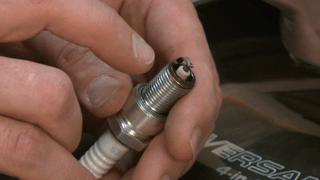Dead spots, fungus or discolored areas in your lawn are among the most discouraging and common lawn -related problems homeowners face. Wait for a change in the weather. Keep your eyes open for early signals of lawn problems. Nutrient Deficiencies in Grass. Air-fuel compression is crucial to engines powering lawn mowers and outdoor power equipment.
If there isn’t proper valve clearance or there’s a leak, this can cause compression problems that keep an engine from starting. Diagnosing Turfgrass Problems. Some common problems are: Grass in the shade? No turf looks as good in the shade as it does in the sun. So do bugs, funguses and other threats to your lawn , trees and shrubs.
A lawn mower features a simple combustion engine and parts that are highly durable. This is a tool of the house that takes a beating every time it cuts the grass and even when it sits outside in the elements. Our do-it-yourself lawn care advice will help you keep your outdoor power equipment working at peak condition and your yard looking its best. Many diseases have similar symptoms and symptoms vary as the disease progresses. Disease-causing fungi are almost always present in the soil, waiting for a time when conditions are right to attack.
Affected lawn areas can become discolored and lose density quickly. Table lists and describes the most common diseases occurring in home lawns in California. See The UC Guide to Healthy Lawns for more information about how to manage lawns and diagnose problems.
There are a lot of lawn problems that can keep you from having the lush, green lawn you want. This article will help you diagnose and fix some of the most common ones. There are so many things that can prevent your lawn from being as strong and green as it could. Chronic lawn problems are often about the soil, not the actual grass.
Having a soil test done is the best $to $you can spend. Home and garden centers sell DIY kits,. To help control lawn problems , use Bayer Advanced Fungus Control every days and follow the lawn care tips in.
Some lawn problems are relatively simple to diagnose , while others are more complex and may require a specialist, or a laboratory analysis. The diagnostic process involves asking the pertinent questions, making appropriate observations, and knowing what to expect on each species during the course of the year. High humidity, moisture, stress conditions, and certain types of grass can create favorable conditions for problems such as lawn fungus, brown patches, red threa and other lawn diseases. Remember that most turfgrass problems are caused by improper management practices, not by insects or diseases. John Deere manufactures various lawn mowers and lawn tractors.
There can be various things that can cause the starter on the lawn tractor to not work. Resist the first reaction many gardeners have of wanting to spray for a disease. Before you make this mistake, consider the many other causes.
Following are the most common causes.
Problems are usually noticed first along concrete edges or in areas without adequate moisture receiving full sun. The Departments of Crop Science and Plant Pathology at North Carolina State University created a website for turf disease identification using simple checkboxes. First, choose (or guess, based on the resources above) the grass varieties in the affected lawn and check the month when symptoms appear.
Select your machine type below to start troubleshooting. But there are actually many non-disease problems that have symptoms similar to those of grass fungus. Very common causes of damaged grass are fertilizer burn, herbicide damage, and poor watering practices that result in too much or too little water in portions of the lawn. Fast control of the pesky animal is key to reducing damage.
Determining which animal is in your lawn is key to reducing damage. Both soil analysis and cultivation will keep growing conditions ideal in your landscapes. The AgriLife Extension Office in Harris County can assist you with diagnosing your lawn problems.

Lawn fungus is a common woe. In order to properly diagnose your lawn problem we need to see a sample. Here is how to take and submit a sample: Cut a 4″ X 4″ section of turf out of the lawn with a couple of inches of soil and roots.
Regular lawn mower maintenance helps prevent problems , plus lengthens the life of your lawn equipment. But even with plenty of TLC, normal wear and tear from hours of mowing the lawn increases the chances of hitting a glitch from time to time. A: Disease problems on lawns are very hard to diagnose and require a professional. I can sometimes determine the differences between lawn diseases and insect problems or even irrigation problems.
Please help me diagnose lawn mower issue? We are experiencing some problems , please try again. Soil testing for lawns doesn’t just involve examining the soil for the lawn but for any shrubs, trees, or gardens on your property. You can only upload files of type PNG, JPG, or JPEG.
All of these things can be adversely affected by soil problems. A typical soil test involves measuring certain aspects of the soil. Can you diagnose the problem?
Here are the facts 1) The soil is heavy in clay 2) The lawn is extremely bumpy and parts sink a bit when you step on them. I have several large ant nests in the lawn.

Sometimes lawn problems are that easy to identify. Look for the most obvious cause. If the answer to the above question is no, there is no obvious cause for the dead spots in the lawn , then look at the scope of the problem area.
No comments:
Post a Comment
Note: Only a member of this blog may post a comment.